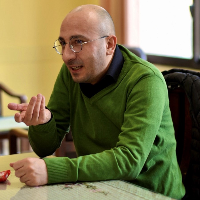The Representation of Social Issues in Iranian Cinema after the Islamic Revolution
Iranian society is full of various social issues. The issues such as poverty, discrimination, inflation, corruption and delinquency, addiction and inefficiency are all part of the constant preoccupations of community members. Among the elites, there are many definitions of social issues. Wright Mills defines the social issue with four characteristics of structural origin, generality, being threating, and structural solution (in Yousefi & Akbari, 2012). Rwomire (2001) considers it to be an undesirable phenomenon that is viewed intolerable by a significant number of the community members and collective action is necessary to correct it. Meanwhile, one of the major areas of social issues is in cinema, and recognizing social issues in the form of image and pictures especially in cinema works can considerably help reduce psychological ambiguities in the field of social issues since “cinema movies are the important cultural source for understanding nature and causes of social deviances” (Soltani Gard Faramarzi, 2016). Review of the related literature suggests that although cinema works have addressed different issues and harms, these works lack a comprehensive and holistic representation of the issues and they have generally pursued different social issues in a scattered manner. Thus, a clear and comprehensive picture of the relationship between Iranian cinema and social issues cannot be achieved. Hence, the present study attempts to analyze comprehensively social issues in the highest-grossing movies of Iranian cinema and pursues the goal of how social issues are portrayed in Iranian cinema after the Islamic Revolution.
In the present study, qualitative content analysis was used as the research method for investigating social issues in cinema. Also, 37 highest-grossing movies of cinema after Iranian Revolution were selected as the sample by using purposive sampling method. It was presumed that all films somehow explicitly or implicitly cover social issues. However, in the selection of the highest-grossing movies, it was emphasized that these types of movies have a common inter-subjectivity among the audience on the most important issues of Iranian society. In addition, some scholars have argued that in order to be able to demonstrate, over a long period, the assessment of cinema based on social changes, the movies should be selected that are acceptable and popular among people (Azad Armaki and Amir, 2013: 111).
The 1980s in Iran began when three years had passed since the victory of the Islamic Revolution and with the onset of the Iran-Iraq war, the society being tensed of the revolution began years of battle. It was natural for social issues to be marginalized and overlooked in the eighties because of the conditions of war in the society. Instead, most of the cinema's emphasis was on sanctifying the war and warriors, the turbulent conditions of the post-revolutionary years, political conflicts and crises, and assassinations have made the issue of security and system maintenance a top priority for the country. Thus, along with the war as the axial problematic issue, the issue of terrorist groups had also become important. The series of these events has led to the absence of the concept of society in cinema in the literal sense. That is why the representation of social issues in cinema was marginalized and the issues were addressed rarely. The 1990s are in line with the process of modernization in Iranian society. In this decade, with the development of higher education and the promotion of women's presence in the public arena stemming from the modernization and reform discourses, women gained better position in the society. Therefore, the cinema of this period, by abandoning traditional roles of women such as housekeeping, emphasized their new roles and represented social issues such as divorce with female problematic. Hence, the taboo of representing women’s issues was broken in this period. The most prominent feature of the social issues represented in cinema of this decade wass female mediator, femininity, and feminine issues. Therefore, most of the narrated issues were associated with the presence, role, activity, and function of women. According to Sorlen (2000), post-war cinema has adopted a more critical approach, and phenomena that have been neglected during wartime due to the excitement and social cohesion of wartime gained the opportunity of reemergence.In the 2000s, social issues were narrated in the context of family in popular cinema. During this period, social issues were expressed more realistically and explicitly. The most important characteristic of the decade distinguishing it from previous decades was the desacralization of past values of society such as warriors, war, and clergy. Studying the process of value transformation in Iran (Taleban et al., 2010) also pointed to the expected changes during this period. This study recognized the importance of materialistic values from the 1970s to the third decade after the Revolution with increasing expansion, and emphasized that many of the super-materialistic values of the first decade of the revolution have been greatly diminished. On the other hand, it should be noted that the social malfunctions and disorganization of society as a whole can be traced within the family entity. Simply put, the manifestation of social issues was in the family, and the popular cinema of the 2000s has portrayed the critical family along with the society evolution and changes.In 2010s, we face with salient characteristics such as variety and proliferation of social issues, representation of acute and critical issues, the interplay of individual issues with social conditions, the representation of the city, the street, and the generalization of issues. The analysis of the popular movies of this decade indicated that the social issues represented have acquired particular characteristics, and among the four decades studied, the 2010s is the most social decade of cinema, and we are faced with the influx of social issues in the popular cinema.
- حق عضویت دریافتی صرف حمایت از نشریات عضو و نگهداری، تکمیل و توسعه مگیران میشود.
- پرداخت حق اشتراک و دانلود مقالات اجازه بازنشر آن در سایر رسانههای چاپی و دیجیتال را به کاربر نمیدهد.



